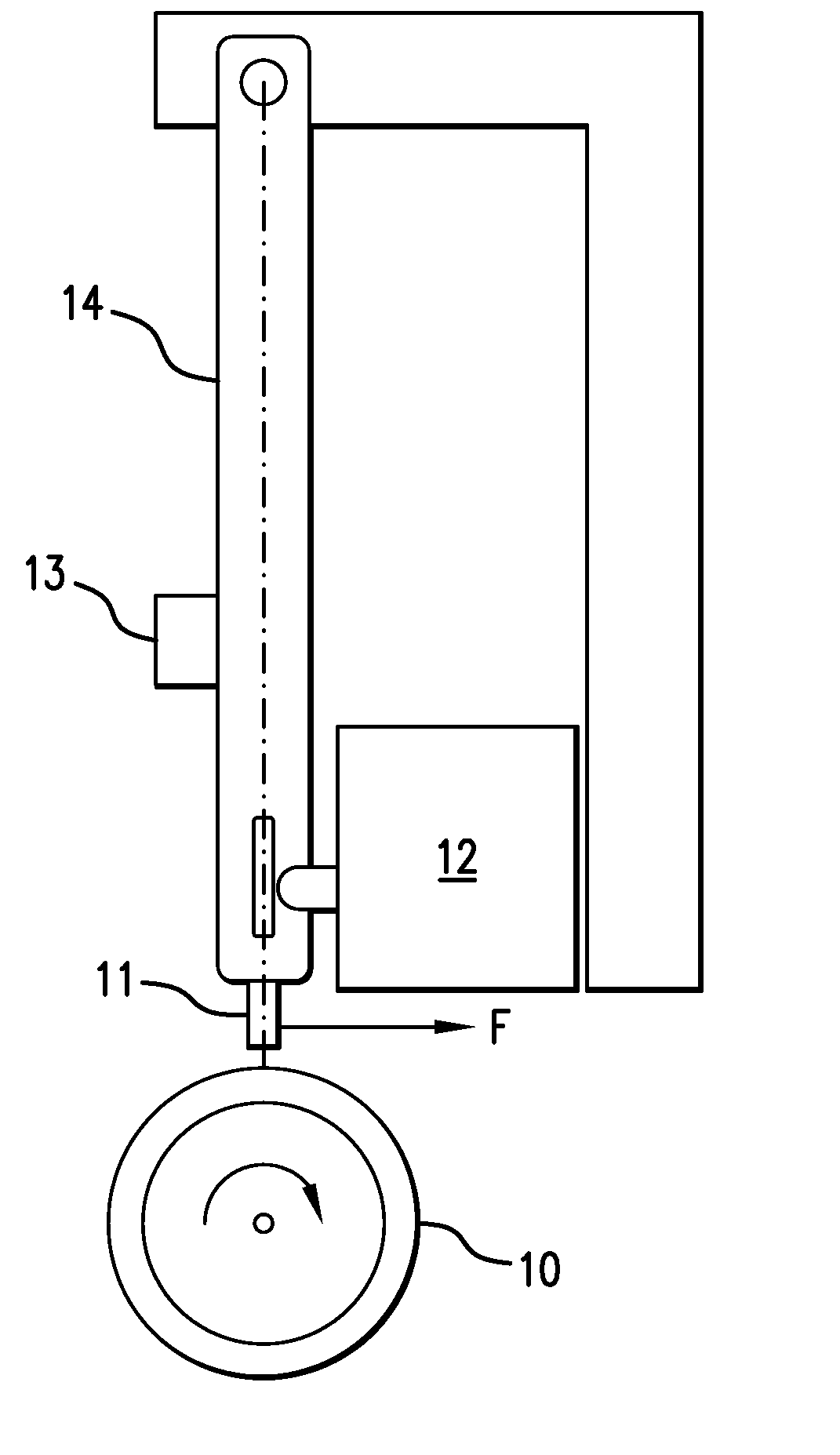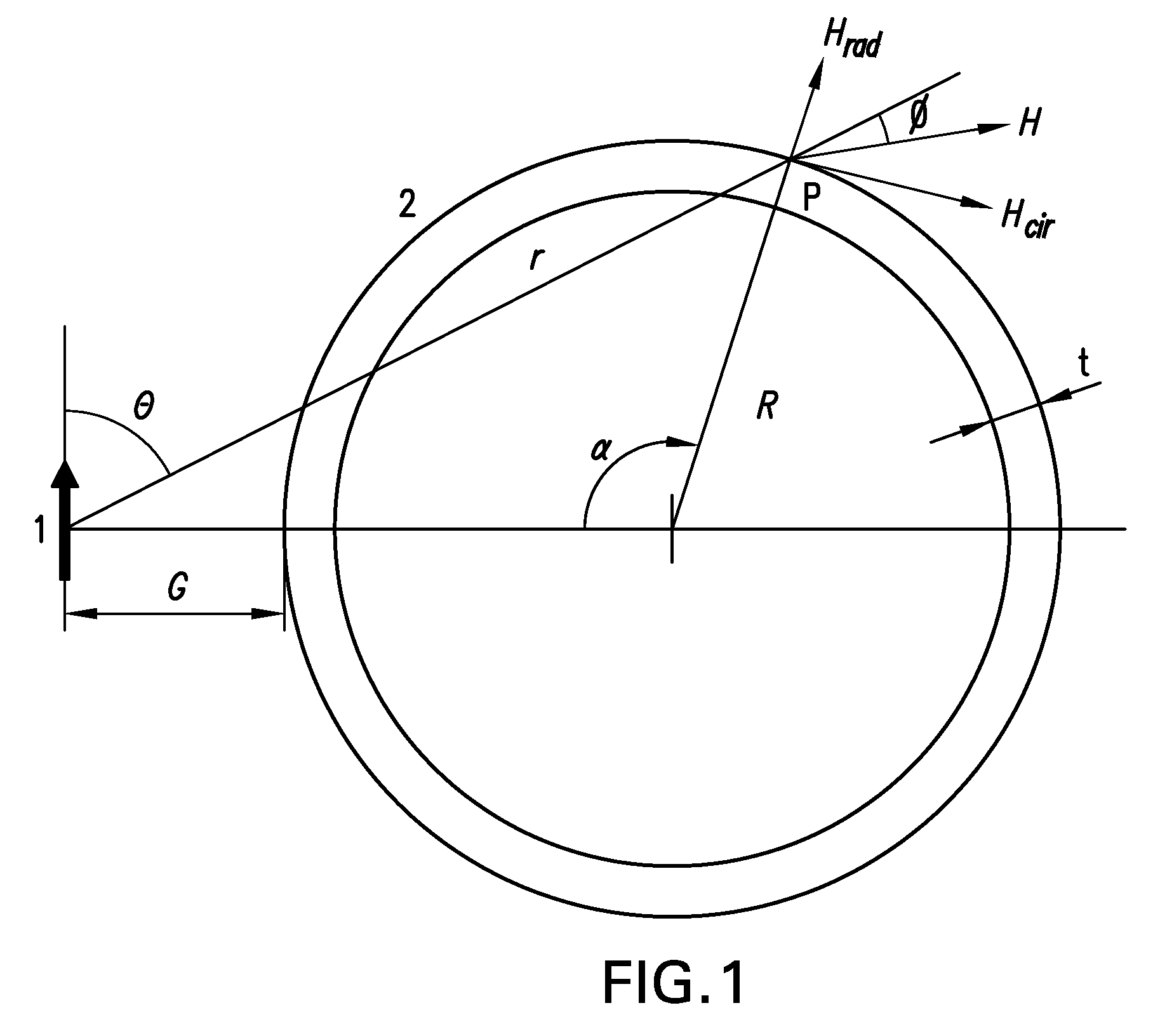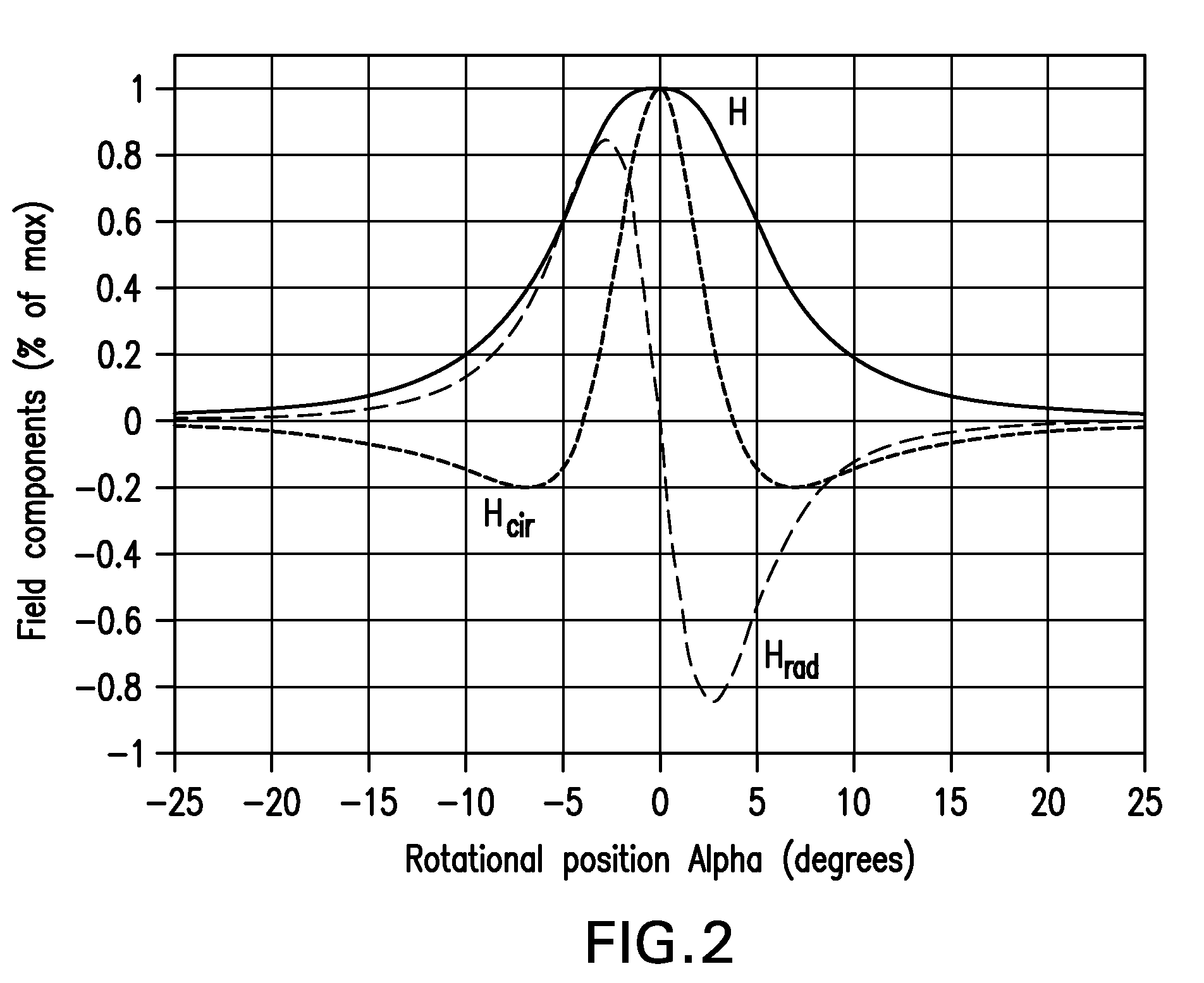Non-destructive evaluation via measurement of magnetic drag force
a technology of non-destructive evaluation and measurement of magnetic drag force, which is applied in the direction of magnetic field measurement using permanent magnets, electric/magnetic measuring arrangements, instruments, etc., can solve the problems of destroying, marring, or otherwise making samples unusable, or less usable, for their original purpose, and wasting a lot of effort in the development of non-destructive evaluation techniques. , to achieve the effect of less time, smaller and more economical apparatus
- Summary
- Abstract
- Description
- Claims
- Application Information
AI Technical Summary
Benefits of technology
Problems solved by technology
Method used
Image
Examples
example 1
Detecting Magnetic Drag Force Using a Single Measurement Magnet
[0106] This example describes one preferred embodiment of the invention. In this embodiment the force resisting the motion of a ferromagnetic member through the intense field close to a permanent magnet is measured by the equal and opposite reaction force on the permanent magnet. This force tends to “drag” the magnet in the direction of motion of the ferromagnetic member.
[0107] Photographs of apparatus incorporating this embodiment is shown in FIGS. 12(a) and (b). The essential features are depicted in the schematic diagram of FIGS. 13 (a) and (b). As illustrated in FIG. 13(b), the drag force measuring device (90) employs a single permanent magnet (PM; 100) suspended at the distal end (102) of a pendulum (104) which can rotate freely about shaft (108). The pendulum is biased to bear slightly against the load cell (110) in the absence of any drag (tangential) force on the magnet. This bias prevents the pendulum from los...
example 2
Apparatus for Measuring Magnetic Drag Force on Rotating Ferromagnetic Shafts
[0111] This example describes a preferred embodiment of the invention that relates a rotating ferromagnetic shaft. A schematic diagram of the apparatus is illustrated in FIG. 5. The shaft was made out of 300M steel (0.43% C, 1.8% Ni, 1.6% Si, 0.8% Cr, 0.4% Mo, 0.07% V, Bal Fe) with an outside radius, R, of 17.5 mm and a wall thickness, t, of 2.5 mm. The coercive force of the material is ±39 Oe. The measurement magnet was of NdFeB type with an energy product of 38MGO, and had dimensions of 2 in. by 0.5 in. by 0.125 in. The load cell was manufactured by Futek (model L2338). The shaft was rotated at slow speed (16.6 rpm) by coupling to a synchronous gear head motor and at high speed (2000 rpm) with a variable speed motor using an O-ring belt.
[0112] Measured values of the drag force for the first 22 revolutions of the shaft (characterized in FIG. 5) are shown in FIG. 6 for a variety of gaps between the magnet ...
example 3
Determining Hysteresis Loss by Measuring Drag Force Using a Single Measurement Magnet
1. Abstract.
[0115] This example describes another preferred embodiment, wherein a magnetic drag force measurement device according to the invention (as schematically illustrated in FIG. 15) is used to measure hysteresis loss in a ferromagnetic strip. Thus, this example also describes novel methods for determining hysteresis losses, particularly in thin strips of soft magnetic materials. These methods are based on the measurement of a drag force that arises with movement of a thin sample strip through the strong field existing in the space near a measurement magnet (here, a permanent magnet). Not associated with macro eddy currents, the drag force is shown to originate from the magnetic hysteresis of the material, having in fact an amplitude equal to the product of hysteresis loss and the area of the sample cross section. Correlation within 18% with measurements made by conventional methods is sho...
PUM
 Login to View More
Login to View More Abstract
Description
Claims
Application Information
 Login to View More
Login to View More - R&D
- Intellectual Property
- Life Sciences
- Materials
- Tech Scout
- Unparalleled Data Quality
- Higher Quality Content
- 60% Fewer Hallucinations
Browse by: Latest US Patents, China's latest patents, Technical Efficacy Thesaurus, Application Domain, Technology Topic, Popular Technical Reports.
© 2025 PatSnap. All rights reserved.Legal|Privacy policy|Modern Slavery Act Transparency Statement|Sitemap|About US| Contact US: help@patsnap.com



